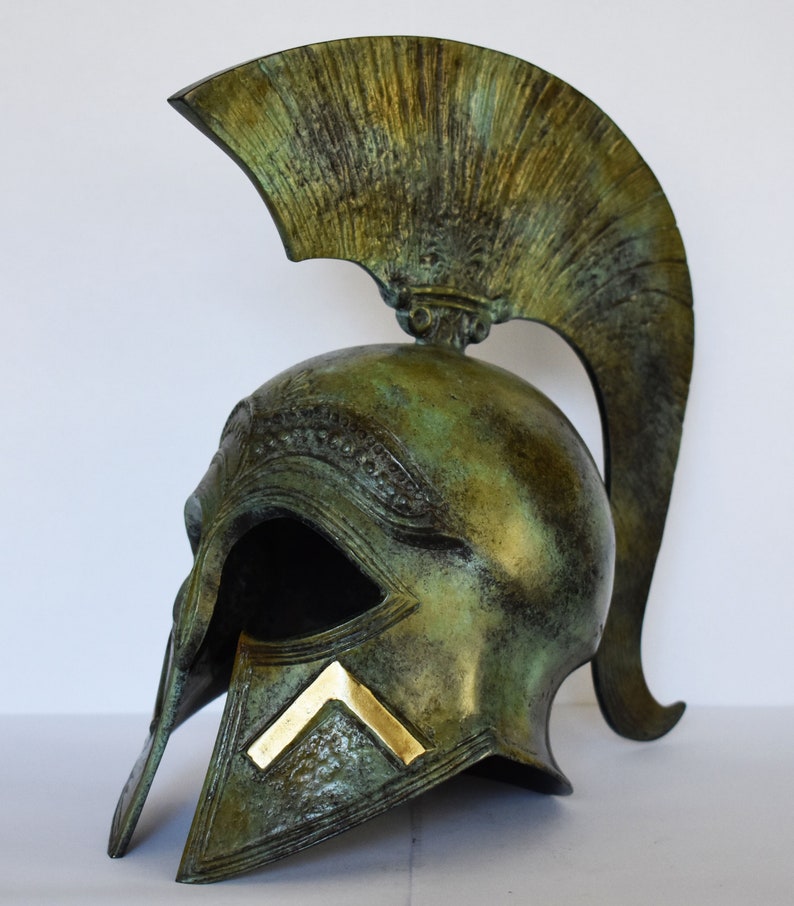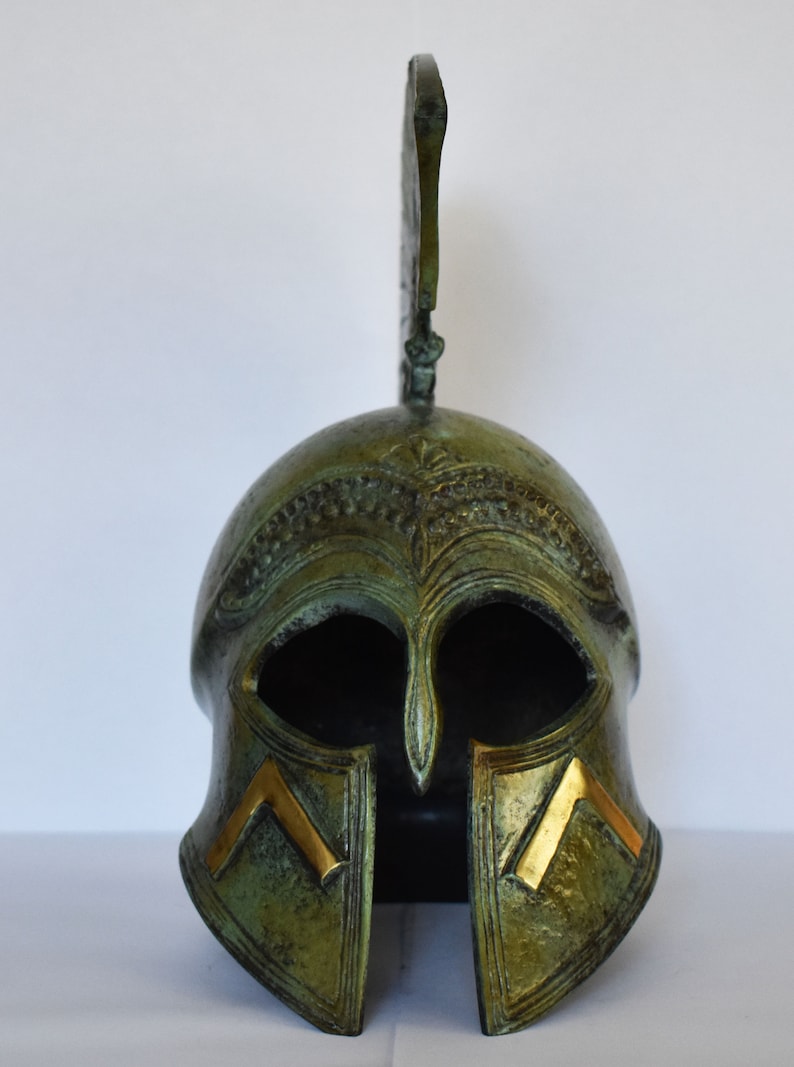In the annals of ancient Greek military history, the Spartan helmet stands as an enduring symbol of martial prowess and cultural legacy. From the rudimentary armors of the Greek Dark Ages to the refined Corinthian helmets of the Classical period, these pieces of protective gear evolved alongside shifts in warfare tactics and societal norms.
Origins and Evolution

In the 8th and 7th centuries BC, Spartan helmets were rudimentary, fashioned from leather or bronze, designed primarily to shield the head and neck. These early iterations were functional but lacked the sophistication and standardized design seen in later centuries.
By the 7th century BC, the iconic Corinthian helmet emerged as the hallmark of Spartan military gear. Crafted from a single piece of bronze, it provided comprehensive protection, covering the entire face up to the nose, with carefully crafted openings for the eyes and mouth. Initially worn fully covering the face during combat, Spartan warriors later adapted by tilting the helmet back when not engaged in immediate battle, balancing protection with practicality.
Functional Artistry
Beyond mere protective gear, Spartan helmets formed an integral part of the hoplite warrior’s complete armamentarium. Alongside the renowned shield, breastplate, leg guards, and often adorned with a crest, these helmets were crucial in defining a warrior’s readiness and social status in Spartan society. Military service was not just obligatory but a badge of honor, and the quality of one’s helmet often signaled their standing within the community.
Tactical Advantages

In dense phalanx formations, Spartan helmets worked synergistically with shields to safeguard warriors from all directions, providing critical defense against both frontal assaults and attacks from above. This strategic integration underscored Spartan adaptability and tactical acumen in battlefield engagements.
Symbolic Significance
As Spartan society evolved, so too did the symbolism imbued in their helmets. Represented prominently in Greek art, these helmets became potent symbols of military valor and strength. Changes in helmet design over time mirrored advancements in military technologies and the evolving tactics of ancient warfare, showcasing the Spartans’ ability to adapt and innovate amidst changing battlefields.
Enduring Legacy

Today, Spartan helmets, particularly the Corinthian variant, endure as powerful icons of ancient Greek military history. They embody the resilience, discipline, and martial might synonymous with Sparta, leaving an indelible mark on the collective imagination of historians and enthusiasts alike.
From their humble beginnings in the Greek Dark Ages to their peak in the Classical period and beyond, Spartan helmets not only protected warriors but also encapsulated the essence of Spartan identity — a testament to the enduring legacy of ancient Greek civilization.
Perspective through video
Từ những bộ áo giáp thô sơ của Thời kỳ đen tối của Hy Lạp cho đến những chiếc mũ bảo hiểm Corinthian tinh xảo của thời kỳ Cổ điển, những bộ đồ bảo hộ này đã phát triển cùng với những thay đổi trong chiến thuật chiến tranh và chuẩn mực xã hội.
